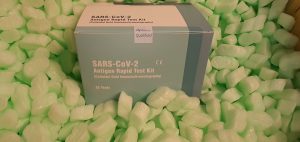Gouty arthritis is a standard metabolic illness attributable to long-term purine metabolic dysfunction and elevated serum uric acid. Jiang-Suan-Chu-Bi recipe (JSCBR), a conventional Chinese natural components prescribed in keeping with utilization frequency and cluster evaluation, has been clinically validated treatment for gouty arthritis. However, its therapeutic composition and mechanism stays unclear.In the current examine, a easy, speedy, and delicate ultraperformance liquid chromatography coupled with quadrupole time-of-flight mass spectrometry (UHPLC-QTOF-MS)-based chemical profiling was firstly established for comprehensively figuring out the main constituents in JSCBR.
A phytochemistry-based community pharmacology evaluation was additional carried out to discover the potential therapeutic targets and pathways concerned in JSCBR bioactivity. Finally, THP-1 cell mannequin was used to confirm the prediction outcomes of community pharmacology by western blot evaluation.A complete of 139 compounds containing phenolic acids, flavonoids, triterpenoid saponins, alkaloids, amino acids, fatty acids, anthraquinones, terpenes, coumarins, and different miscellaneous compounds had been recognized, respectively.
175 illness genes, 51 potential goal nodes, 80 compounds, and 11 associated pathways based mostly on community pharmacology evaluation had been achieved. Among these pathways and genes, NOD-like receptor signaling pathway could play an vital position in the healing impact of JSCBR on gouty arthritis by regulation of NRLP3/ASC/CASP1/IL1B. Comparisons of NH(4)OH with different bases, and with salts indicated that seed habits couldn’t be accounted for solely by osmolar or alkaline components.
The outcomes of mobile and molecular experiments confirmed that JSCBR can successfully cut back the protein expression of ASC, caspase-1, IL-1β, and NRLP3 in monosodium urate-induced THP-1 cells, which indicated that JSCBR mediated irritation in gouty arthritis by inhibiting the activation of NOD-like receptor signaling pathway.Thus, the built-in approaches adopted in the current examine may contribute to simplifying the advanced system and offering instructions for additional analysis of JSCBR.
Seed populations from a majority of species and cultivars of Allium yield as much as 15% germination below atmospheres containing NH(3) along with equal volumes of N(2) or air. Selected onion and leek cultivars examined in a spread of NH(3) or O(2) compositions present little or no dependency upon quantitative variations in these gases.Radicles from seeds germinated in ammonia displayed low frequencies of irregular mitotic exercise. Aspects of NH(3) toxicity, tolerance and permeation had been additionally thought-about.
A NEW METHOD FOR THE GENERATION AND USE OF FOCUSED ULTRASOUND IN EXPERIMENTAL BIOLOGY.
An environment friendly generator of centered ultrasound has been designed, constructed, and efficiently operated. 2. The generator has been used to supply focal heating in the facilities of paraffin blocks, and in an analogous method, focal areas of destruction had been obtained deep in contemporary liver tissue with minimal results at the floor and no results on the intervening tissue. 3. In animals, centered ultrasound of excessive depth produced native cerebral adjustments as inferred from habits disabilities and as demonstrated at post-mortem.
This native mind impact was achieved by intervening scalp, cranium, and meninges. The ensuing habits disabilities disappeared in from 2 to 16 hours. 4. To date, it has not been attainable to supply such mind adjustments with out incidental damage to the pores and skin and subcutaneous tissue mendacity at the base of the cone of radiation. 5. Improvements in era and utility of the centered supersonic beam are urged whereby it needs to be attainable to extend nonetheless additional the focal results in the mind, with a corresponding lower or elimination of complicating floor damage.
The complete characterisation of advanced parameter house in ‘-omics’ applied sciences requires high-throughput methods. In vitro compartmentalisation of reactions in water-in-oil droplets combines the mandatory capacity to hold out giant numbers of experiments below managed circumstances with quantitative readout, and has not too long ago superior in direction of automation by producing droplets in microfluidic gadgets.
Some approaches based mostly on these rules are already acquainted (e.g. emulsion PCR for sequencing), others, together with directed evolution or cell-based assays, are in superior levels of development–and proof-of-principle experiments are showing for an entire vary of functions in diagnostics, cellomics, proteomics, drug discovery and methods and artificial biology. This evaluation describes the present state-of-the-art, notes salient options of profitable experiments and extrapolates in the path of extra extremely built-in methods.

Recent achievements and developments in experimental plant biology.
Between 21 and 25 September 2009, Krakow hosted the 4th Conference of the Polish Society of Experimental Plant Biology, co-organized with the Faculty of Biochemistry, Biophysics and Biotechnology, Jagiellonian University, Krakow, and supported by the Biochemical Society. The goal of the convention was to current and talk about the most vital matters in several disciplines of plant experimental science in addition to to facilitate the interplay and co-operation between scientists. To obtain this objective, about 30 prime specialists in numerous areas of plant biology had been invited to provide plenary lectures in the following classes:
Plant construction and growth; Plant-microbial interactions; Mitochondria and chloroplasts in cell metabolism; Stress tolerance in crops; Structural and purposeful group of plant genomes; Mutants in developmental and metabolic research; Secondary metabolites as pharmaceutics and nutraceutics; Plant membranes; and Integrating plant features by way of signalling molecules: molecular mechanisms. Some of the fundamental issues highlighted in the plenary lectures are briefly summarized in the current paper.
[Linking template=”default” type=”products” search=”Sucrose for molecular biology” header=”2″ limit=”128″ start=”3″ showCatalogNumber=”true” showSize=”true” showSupplier=”true” showPrice=”true” showDescription=”true” showAdditionalInformation=”true” showImage=”true” showSchemaMarkup=”true” imageWidth=”” imageHeight=””]
Two poster classes enabled a dialogue of over 200 posters introduced. The convention had an worldwide character, its official language was English, and amongst the greater than 350 contributors, about 60 had been from overseas. Several plenary lectures had been ready as quick evaluation papers and they’re revealed on this subject of Biochemical Society Transactions.